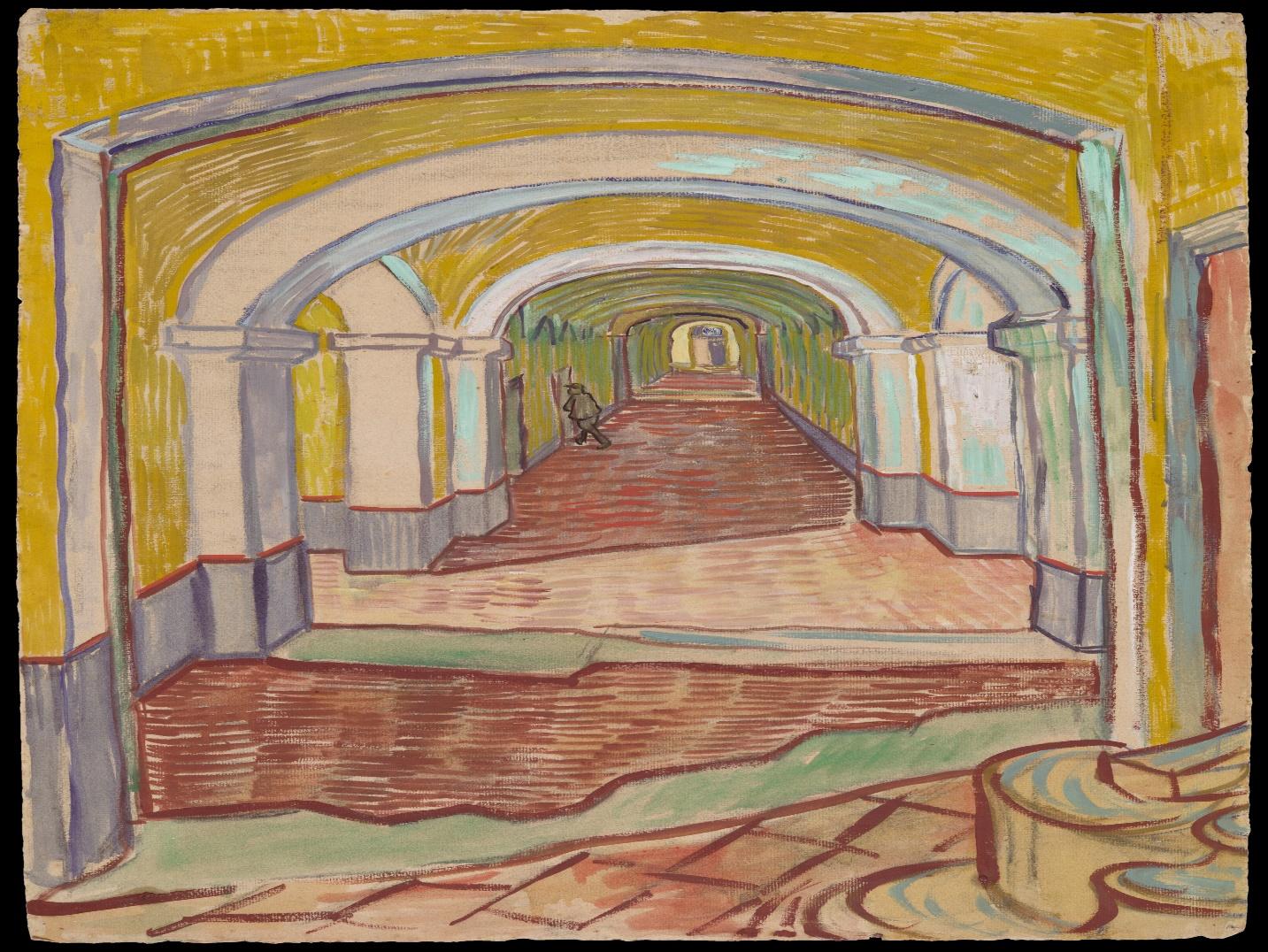
Several details in Vincent Van Gogh’s 1889 artwork Corridor in the Asylum catch the viewer’s attention, but the lone person in the central area of the picture is perhaps the most prominent. One lone individual is shown moving out of the corridor and the viewer’s viewpoint as a seemingly endless hallway extends into the horizon. Van Gogh depicts the asylum, which he hopes to leave, in a melancholy and dismal manner by leaving this menacing figure alone in a lengthy, dark hallway. His use of a one-point perspective to sketch in three dimensions and his use of strong lighting and shadows also contribute to this eariness. The texture and pattern lines are short and wavy, giving the impression that the floor is made up of multiple meandering and uneven rivers running over it. The muted yellow, blue, and green tones hint at the dismal atmosphere and add to the building’s decaying appearance. The viewer’s attention is drawn to the end of the corridor, which is emphasized by the symmetrical space, balance, and lines that create a sense of seclusion.
The lengthy, cramped passageway exudes a feeling of hopelessness since it seems to go on forever. However, one experience of imprisonment depicts the artist’s loneliness and solitude when confined to the asylum’s hallways. The majority of the colors employed in this picture are quite dull, lending to the image’s staleness. Van Gogh defines areas with darker and softer hues. The interior of the asylum is painted in drab, dreary hues that reflect Van Gogh’s melancholy throughout his stay and sickness journey. The painting’s symmetry and repetition of shape and color create a sense of tedious regularity and monotony. This repetition lengthens the seemingly endless hallway and produces a place that appears contained and never-ending, reflecting Van Gogh’s impressions of his stay there as being alone and aimless.
Van Gogh’s artwork reflects a period and place when people with mental illnesses were not well welcomed or understood, resulting in their exile from society. Today, A Corridor in the Asylum is extremely valuable because it captures the last years of a famous artist’s life as seen through his own eyes, including his surroundings, perceptions, and feelings. Painting gave Van Gogh comfort throughout his bouts of mental sickness (Lee 103). The delicate and melancholy representation of Van Gogh’s mental illness allows the spectator to penetrate the interiority of the artist throughout his sickness process and journey, and to get insight and understanding of his traumas and tragedies.
Work Cited
Lee, Young-Sik. “The review of Vincent van Gogh’s mental world and mental illness in the viewpoint of modern psychiatry.” Journal of Korean Neuropsychiatric Association (2021): 97-119.